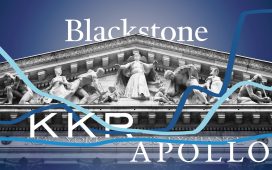High earning middle-aged men will pay more in national insurance over their working lives than they get back in state pension income, analysis has shown.
Employees and the self-employed earning or making profits over a certain threshold are required to pay national insurance contributions, or a tax on earnings, which is used to help build entitlement to certain benefits such as the state pension or maternity allowance.
Research published this week by the Pensions Policy Institute, an independent research group, compared the contributions of those aged 20, 40 and 60 with how much they might receive in retirement.
It found 40-year-old male employees who rank in the top 10 per cent of earners will pay about £250,000 in national insurance contributions during their lifetime, but receive only £248,000 in state pension income back if they live to age 90.
In contrast, a man of the same age but on average earnings would pay in £138,000 in NICs over his lifetime and receive £213,000 in state pension if he lived to age 87, an assumed life expectancy. A man of the same age among the lowest 10 per cent earners would pay in £56,000 in NICs but receive £179,000 in state pension until the age of 84.
“Higher paid workers are expected to live longer than lower earners, meaning they are in receipt of the state pension for longer,” said the analysis, which explored how much people of different socio-economic backgrounds and ages might contribute through national insurance versus how much they might receive from the new state pension in retirement.
“NICs are salary related, so the higher paid individuals have paid in larger amounts than lower earners,” it said.
The analysis found top-earning 40-year-old men were the only group modelled to receive less state pension than NIC contributions paid in, with men and women across the age groups in the study all getting bigger benefits from the state pension.
Sir Steve Webb, a former pensions minister, said the analysis demonstrated that the state pension, which is eligible for everyone aged 66 and over, and who has a minimum level of NI contributions or credits, represented “extremely good value for most people”.
“Whether men or women, high earner or low earner, young or old, most people can expect to get more out of the state pension than they pay in, at least in terms of their employee contributions,” said Webb, now a partner with LCP, the actuarial consultancy.
Currently, employees aged 16 or over pay NI at 12 per cent on weekly earnings between £242 and £967. Additionally, NI is payable at 2 per cent on the slice of weekly earnings over £967. The self-employed will also pay NI on earnings, depending on their profits.
The PPI analysis comes as the government considers faster increases to the state pension age, and alongside debate over how future improvements to the NHS, and social care should be funded.
In September, the Truss government reversed a 1.25 percentage point rise in national insurance intended to help fund health and social care. The current crisis in the health service is likely to renew discussion over how improvements should be funded.
“While the analysis by the Pensions Policy Institute demonstrates that the vast majority of people across the income and age spectrums will typically receive back more than they have contributed, this is not going to be the case for middle-aged high earners, who are also shouldering a relatively high proportion of the total income tax burden,” said Jason Hollands, managing director of Evelyn Partners, the wealth manager.
“Whether or not it is by deliberate design, the system therefore has a creeping redistributive element to it that is likely to become more pronounced if the state pension age rises further, as seems inevitable given the costs of the system and rising life expectancy.”
The analysis underlined the case for high earners to contribute to private or workplace pensions, Hollands said. This included potentially putting in place salary sacrifice arrangements, especially where an individual’s earnings had a large variable component, such as a bonus payment.
“Alongside reducing an income tax liability through relief at your marginal rate, pension contributions also reduce the national insurance exposure for both the individual and their employer,” said Hollands.
The government is expected soon to publish the results of an independent review of the state pension age. This is currently 66 for men and women but due to rise gradually to 67 between 2026 and 2028.









